Racetracks, Acorns and Physics, Oh My!
Discovery Place Nature
Stock car racing is a popular pastime and one of the most watched spectator sports in the Charlotte region. In fact, the NASCAR Hall of Fame is in Uptown Charlotte and the Charlotte Motor Speedway is nearby in Concord.
Spectators enjoy watching “the cars turn left,” but do we ever really stop to appreciate the science behind it all? Although most racecars have been specially engineered to have unique capabilities that help them achieve success on the racetrack, winning a race has less to do with horsepower and more to do with understanding and applying physics.
The secret: Accelerating at the right time around a curve and using momentum to the driver’s advantage.
Have you ever gone down a water slide that has a steep incline, twists and turns and wondered how you managed to go down without flying out around the bends? The same concepts that are used to design racetracks are used in creating water slides as well.
The forces that impact the way a racecar moves along a racetrack are the same forces that impact how you move going down a water slide. Newton’s First Law of Motion says that once in motion, an object will stay in motion unless acted on by external forces.
We are going to break down all the forces behind the speed, banks and bends today in a fun and easy activity you can do in your pajamas using materials you likely already have at home.
Learning Time: 10-15 minutes
Prep Time: 20 minutes
Age Range: Elementary – Middle School
For younger learners, this may need to be a project that is facilitated by a caregiver.
Materials List
- Cardboard tubes
- Scissors
- Tape
- A marble (or a small ball)
- An acorn from outside (The squirrels will forgive you)
Learn the Science
- Momentum – The amount of motion an object has based on its mass and velocity (speed); the force that an object has when moving forward.
- Inertia – Newton’s First Law of Motion, an object in motion will stay in motion unless acted on by an external force.
- Kinetic energy – Energy of motion.
- Potential energy – Stored energy.
- Velocity – (speed) An object’s change in position divided by time of travel.
- Centripetal force – A force that acts on a body moving in a circular path and is directed toward the center around which the body is moving.
- Friction – The force of resistance that occurs when the surface of an object moves over another.
- Gravity – The force that keeps our feet on the ground; the universal force of attraction acting between all matter.
- Aerodynamic – The shape of an object which impacts the drag from air resistance.
Directions
Design a track fit for a small object using physics concepts, and hopefully learn something new in the process. Using cardboard tubes, you will build your track with an incline and bends and compare how the shape of your small object impacts the velocity at which it travels down your track.
Because we will not be using a motorized “car” (although a motorized acorn would be pretty neat), we are going to construct our track more like a slide and use gravity, inertia and momentum as our energy forces.
You will need quite a few cardboard tubes to start – paper towel rolls, toilet paper rolls or wrapping paper rolls work best. We used nine toilet paper rolls in total for our design, but you can use more or less depending on how intricate you want to make yours.

Start by taking your first cardboard tube and cutting it in half. Tape the pieces together in a straight line and tape the two halves to a sturdy surface like a table or desk with the concave side facing upward.
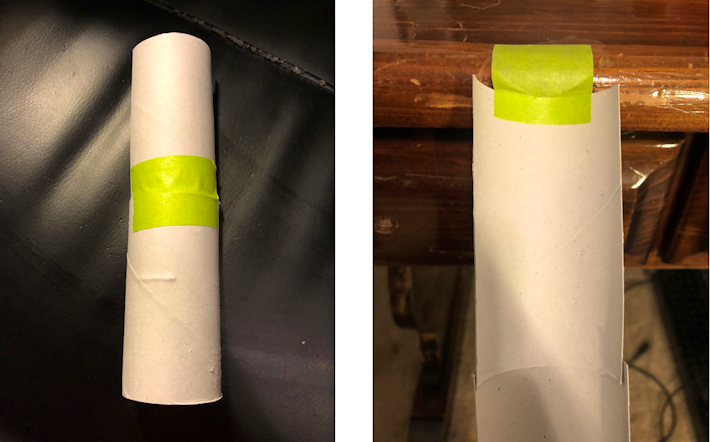
This next part can be a little tricky at first but once you get the hang of it, it gets easier. Take your next cardboard tube half and angle it before taping it to the first two. You may need to cut pieces away or add pieces here to make sure there are no gaps between the tubes.
This process takes problem solving, trial and error and engineering. Sometimes you will need to stick pieces together, unstick them, shift and adjust until you get it just right!
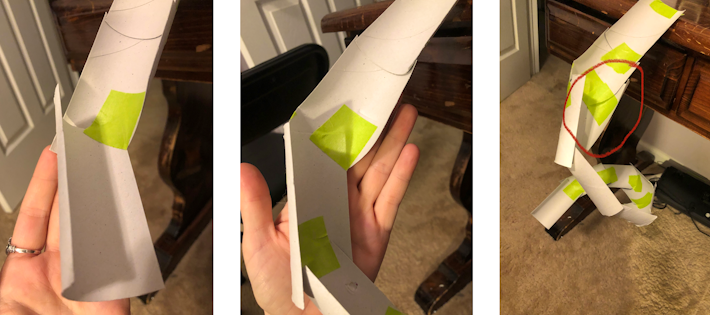
Continue attaching halves together at an angle. Propping your tube track on something like a chair can help with assembly until you finish your design.
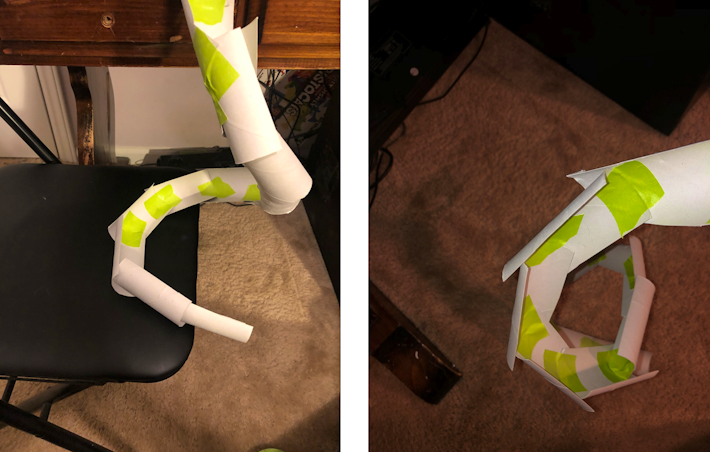
Keep curving your track all the way down to the bottom. It does not have to be beautiful; it just has to be functional.
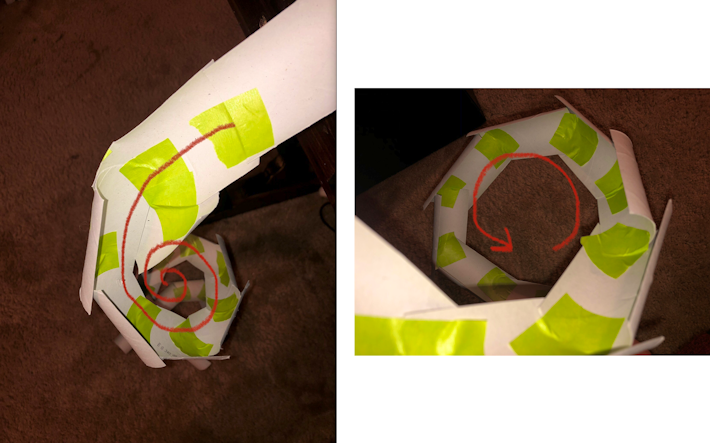
Once you have your track finished, let’s take a moment to talk about the design and make observations.
- Did you need to cut any cardboard away from the rolls or attach extra along the sides?
- Look at the way it curves, do you have banked curves like a racetrack?
- Do you have excess material along the edges to prevent your marble from falling out?
Test your marble on your track if you have not done so already. Does it roll from the top of your design to the bottom without falling out? How does it land? Make adjustments as necessary until you are satisfied with your project, and then let’s talk science!

If you built your track on a hard floor, chances are that your marble will continue rolling for a while. Watch how it rolls. We did ours on a carpeted floor, so the friction from the carpet slowed the marble down.
We noticed that our marble exited the track on a curved path instead of a straight line. If this was done on a hard floor, would the marble continue to spiral? Try it out and see.
Let’s think about our key concepts for a moment, starting with inertia. Left to its own devices, a marble in motion would stay in motion moving in a straight line unless an external force acted upon it. What are the external forces acting on our marble?
- We have gravity pulling our marble down.
- We have the sloped cardboard tubes acting as banked curves which help keep our marble in motion. If this were a racecar on a racetrack, we would have power generated from our motor giving us the energy to move forward and something called centripetal force keeping us from flying off the track as we banked the corners at a high speed.
- We have momentum building up as our marble increases in velocity while moving down the track.
- Because our marble is smooth and round, it is considered aerodynamic. Now try sending an acorn down your track and notice how it moves. It’s a little different right? The acorn is not as aerodynamic as a marble, so the results are going to be a little different.
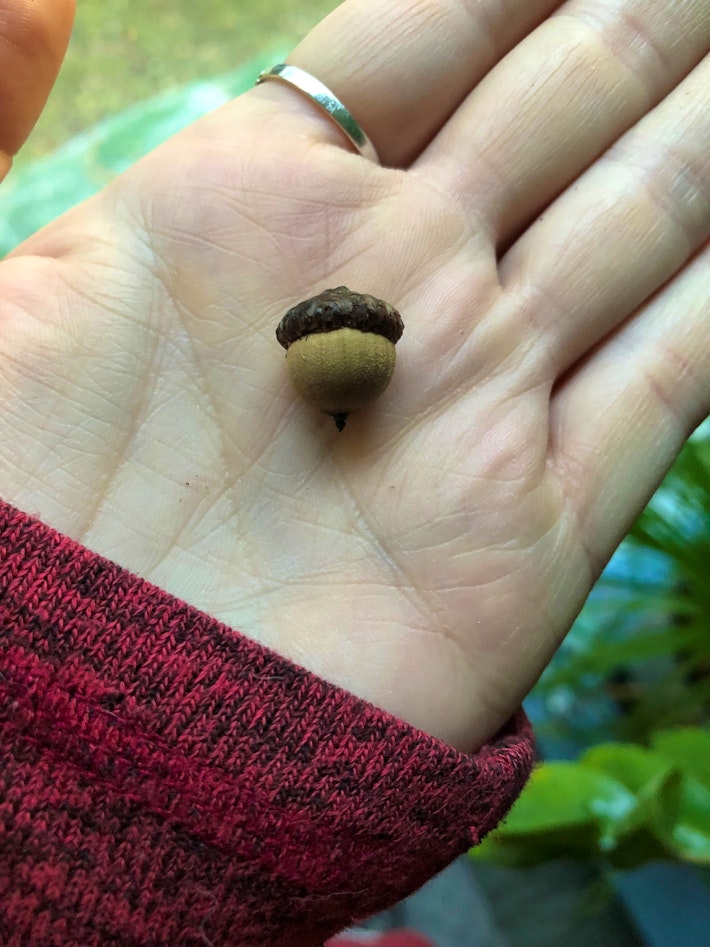
More to Explore
For a better example of how centripetal force works, put a ball inside of a plastic bag and spin it around your head (this is best done outside). If you let go of the bag, does the ball continue to spin in circles around your head? What forces are acting on your ball when you let go of the bag?

